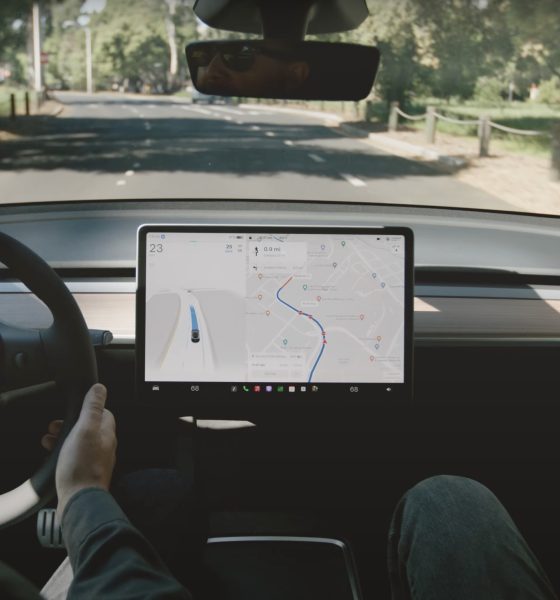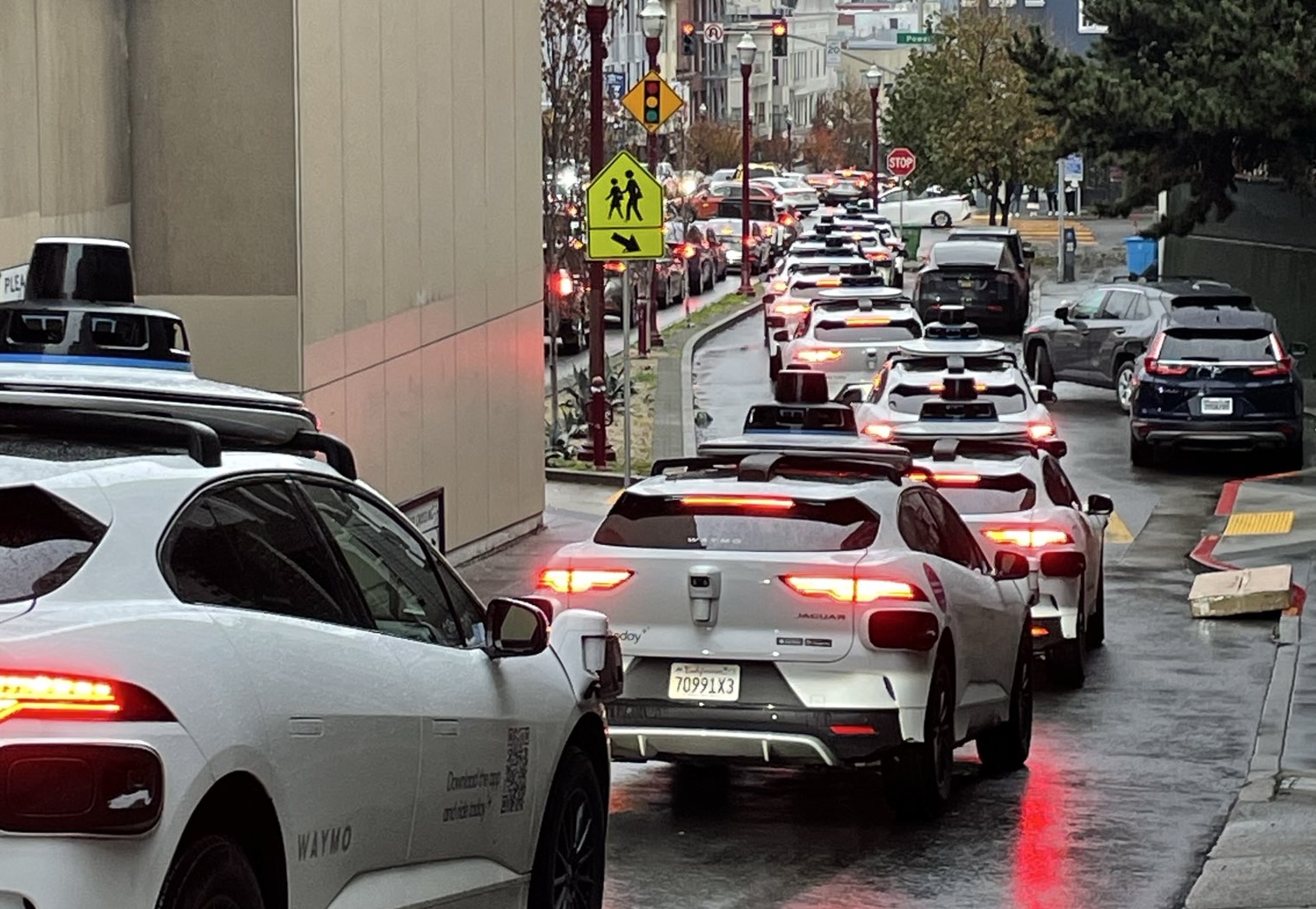

News
Tesla owners share first impressions of FSD V12.5 on Hardware 3 vehicles
It appears that Tesla is now ramping the release of FSD V12.5.1.5 to more Hardware 3 vehicles. Based on comments from HW3 Tesla owners on social media, it appears that the recently released update represents a good step forward for the advanced driver-assist system.
As noted by Tesla Director of Autopilot Software Ashok Elluswamy in a recent comment on social media platform X, the company was able to achieve similar performance as HW4’s FSD V12.5 release with a smaller model for Hardware 3 vehicles. He also noted that deploying the larger model required Tesla to “implement a few kernels in the compiler to emulate the same operations that are natively supported on the AI4 hardware.”
First Drive of 12.5.1.5 on HW3! Fixed the One Main Issue on this route! pic.twitter.com/6RDBIwwD2l— Rocco Speranza (@R0cco_Speranza) August 23, 2024
While initial reports of FSD V12.5’s HW3 release still suggested that the software was being rolled out to employees, later posts on social media suggested that regular consumers were also receiving the update. Reviews posted on social media from longtime Tesla owners so far suggest that FSD V12.5 may very well be the best version of the advanced driver assist system that has been rolled out to HW3 vehicles to date.
? FSD 12.5.1.5 Initial impression on HW3 (compared to 12.4.3)
• Feels smoother
• Seems to be able to anticipate other cars' movement much better
• Overall it feels "quicker" and more confident in making decisions
• Highway stack definitely feels more decisive
• Too low… https://t.co/TpUpGHNiQk pic.twitter.com/pgd9jTU2Mv— Effetto Tesla (@EffettoTesla) August 23, 2024
Among the most prominent comments from HW3 vehicle owners was that FSD V12.5 definitely feels smoother than previous iterations of the advanced driver assist system. The build reportedly also feels quicker and more confident in making decisions. This is quite evident in the freeway, as the highway stack has reportedly become more decisive with the V12.5 update as well. That being said, some owners also mentioned that V12.5’s auto speed is a bit too slow in Hardware 3 vehicles.
FSD 12.5.1.5 first impressions on HW3 “legacy” Model S (~45 min drive)
– the 12.5 magic is definitely still there. it takes natural paths through all the turns, has very good lane positioning, and much better acceleration / braking than any version so far
– it’s not hands free… pic.twitter.com/FYgEQcckOz— ΛI DRIVR (@AIDRIVR) August 23, 2024
Longtime FSD tester @AIDRIVR, who uses a Hardware 3 Tesla Model S with no interior camera, observed that the new update tends to take natural paths through turns. He also noted that FSD V12.5 has very good lane positioning. The update reportedly also featured the best acceleration and braking compared to any FSD version that has been released to date.
I just took FSD 12.5.1.5 (HW3) out for a quick after dark drive. It was flawless and extremely comfortable. However….!!! I think I could have said the same about many previous releases under the same situation. More testing required to form a full opinion. @BarryGoodStocks https://t.co/FKAAxvuNNw— FSD (Beta) Test Pilot (@j32pmxr) August 23, 2024
Overall, it does appear that FSD V12.5 is a solid release for Hardware 3 vehicles. However, it does present some concerns about how fast older Teslas would be receiving the latest updates from the electric vehicle maker. Tesla first started selling FSD as an add-on for Enhanced Autopilot in 2016, after all, and Hardware 3 was only made available for vehicles in 2019. Hardware 4 was released in 2023.
Watch a video of FSD V12.5 on a Hardware 3 vehicle below.
Don’t hesitate to contact us with news tips. Just send a message to simon@teslarati.com to give us a heads up.

News
Tesla quietly flexes FSD’s reliability amid Waymo blackout in San Francisco
“Tesla Robotaxis were unaffected by the SF power outage,” Musk wrote in his post.

Tesla highlighted its Full Self-Driving (Supervised) system’s robustness this week by sharing dashcam footage of a vehicle in FSD navigating pitch-black San Francisco streets during the city’s widespread power outage.
While Waymo’s robotaxis stalled and caused traffic jams, Tesla’s vision-only approach kept operating seamlessly without remote intervention. Elon Musk amplified the clip, highlighting the contrast between the two systems.
Tesla FSD handles total darkness
The @Tesla_AI account posted a video from a Model Y operating on FSD during San Francisco’s blackout. As could be seen in the video, streetlights, traffic signals, and surrounding illumination were completely out, but the vehicle drove confidently and cautiously, just like a proficient human driver.
Musk reposted the clip, adding context to reports of Waymo vehicles struggling in the same conditions. “Tesla Robotaxis were unaffected by the SF power outage,” Musk wrote in his post.
Musk and the Tesla AI team’s posts highlight the idea that FSD operates a lot like any experienced human driver. Since the system does not rely on a variety of sensors and a complicated symphony of factors, vehicles could technically navigate challenging circumstances as they emerge. This definitely seemed to be the case in San Francisco.
Waymo’s blackout struggles
Waymo faced scrutiny after multiple self-driving Jaguar I-PACE taxis stopped functioning during the blackout, blocking lanes, causing traffic jams, and requiring manual retrieval. Videos shared during the power outage showed fleets of Waymo vehicles just stopping in the middle of the road, seemingly confused about what to do when the lights go out.
In a comment, Waymo stated that its vehicles treat nonfunctional signals as four-way stops, but “the sheer scale of the outage led to instances where vehicles remained stationary longer than usual to confirm the state of the affected intersections. This contributed to traffic friction during the height of the congestion.”
A company spokesperson also shared some thoughts about the incidents. “Yesterday’s power outage was a widespread event that caused gridlock across San Francisco, with non-functioning traffic signals and transit disruptions. While the failure of the utility infrastructure was significant, we are committed to ensuring our technology adjusts to traffic flow during such events,” the Waymo spokesperson stated, adding that it is “focused on rapidly integrating the lessons learned from this event, and are committed to earning and maintaining the trust of the communities we serve every day.”
News
Waymo scrutinized after self-driving taxis cause traffic jams during SF blackout
It’s not farfetched to speculate that it would have been a doomsday scenario for Tesla had FSD behaved this way.

A power outage across San Francisco over the weekend forced numerous Waymo self-driving taxis to stop at darkened intersections and cause traffic blockages in multiple locations across the city. The disruption left riders stranded, frustrated drivers blocked, and city officials stepping in as the Alphabet-owned company temporarily suspended service amid the widespread gridlock.
Needless to say, it would likely have been a doomsday scenario for Tesla had FSD behaved in a similar way, especially if fleets of its robotaxis blocked traffic for numerous drivers.
Power outage halts Waymo fleet
The outage knocked out electricity for tens of thousands of customers, leaving traffic signals dark across large parts of the city, as noted in a report from the New York Times. Waymo vehicles began stopping at intersections and remained stationary for extended periods, seemingly unable to operate. Tow truck operators worked through the night removing immobilized vehicles, while videos circulated online showing Waymos with hazard lights flashing as traffic backed up around them.
Waymo later confirmed that it had paused its Bay Area ride-hailing service after the San Francisco mayor’s office contacted the company about the congestion its vehicles were contributing to. Service began coming back online shortly after 3:30 p.m. local time, though some users still reported being unable to request rides. Waymo maintained that no injuries or accidents were reported during the outage.
Autonomous cars during emergencies
The incident surprised industry observers since autonomous vehicles are designed to function during signal outages and temporary connectivity losses. Waymo stated that its vehicles treat nonfunctional signals as four-way stops, but “the sheer scale of the outage led to instances where vehicles remained stationary longer than usual to confirm the state of the affected intersections. This contributed to traffic friction during the height of the congestion.” Experts suggested the problem may have been linked to the vehicles’ reliance on remote assistance teams, which help resolve complex situations the cars cannot handle independently.
“Yesterday’s power outage was a widespread event that caused gridlock across San Francisco, with non-functioning traffic signals and transit disruptions. While the failure of the utility infrastructure was significant, we are committed to ensuring our technology adjusts to traffic flow during such events,” the Waymo spokesperson stated, adding that it is “focused on rapidly integrating the lessons learned from this event, and are committed to earning and maintaining the trust of the communities we serve every day.”
News
Tesla aims to combat common Full Self-Driving problem with new patent
Tesla writes in the patent that its autonomous and semi-autonomous vehicles are heavily reliant on camera systems to navigate and interact with their environment.

Tesla is aiming to combat a common Full Self-Driving problem with a new patent.
One issue with Tesla’s vision-based approach is that sunlight glare can become a troublesome element of everyday travel. Full Self-Driving is certainly an amazing technology, but there are still things Tesla is aiming to figure out with its development.
Unfortunately, it is extremely difficult to get around this issue, and even humans need ways to combat it when they’re driving, as we commonly use sunglasses or sun visors to give us better visibility.
Cameras obviously do not have these ways to fight sunglare, but a new patent Tesla recently had published aims to fight this through a “glare shield.”
Tesla writes in the patent that its autonomous and semi-autonomous vehicles are heavily reliant on camera systems to navigate and interact with their environment.

The ability to see surroundings is crucial for accurate performance, and glare is one element of interference that has yet to be confronted.
Tesla described the patent, which will utilize “a textured surface composed of an array of micro-cones, or cone-shaped formations, which serve to scatter incident light in various directions, thereby reducing glare and improving camera vision.”

The patent was first spotted by Not a Tesla App.
The design of the micro-cones is the first element of the puzzle to fight the excess glare. The patent says they are “optimized in size, angle, and orientation to minimize Total Hemispherical Reflectance (THR) and reflection penalty, enhancing the camera’s ability to accurately interpret visual data.”
Additionally, there is an electromechanical system for dynamic orientation adjustment, which will allow the micro-cones to move based on the angle of external light sources.
This is not the only thing Tesla is mulling to resolve issues with sunlight glare, as it has also worked on two other ways to combat the problem. One thing the company has discussed is a direct photon count.
CEO Elon Musk said during the Q2 Earnings Call:
“We use an approach which is direct photon count. When you see a processed image, so the image that goes from the sort of photon counter — the silicon photon counter — that then goes through a digital signal processor or image signal processor, that’s normally what happens. And then the image that you see looks all washed out, because if you point the camera at the sun, the post-processing of the photon counting washes things out.”
Future Hardware iterations, like Hardware 5 and Hardware 6, could also integrate better solutions for the sunglare issue, such as neutral density filters or heated lenses, aiming to solve glare more effectively.








